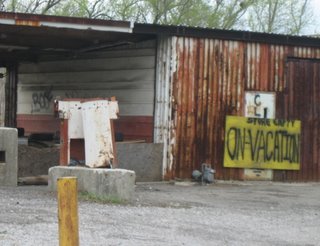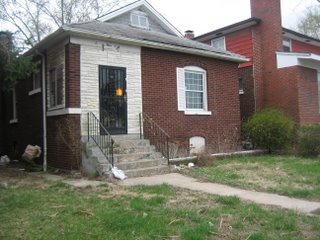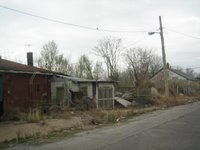Blog Editors
Recent Posts
20 March 2012 – Saint George Day 2: On Medicaid and Zion National Park
19 March 2012 – Saint George Day 1: Utah Legal Services at the Southern Utah Community Legal Center
18 March 2012 – To Saint George, Seven of Us Go!
17 March 2012 – HALO Departs for Spring Break 2012!
Archive
(Not So) Far Away
Posted By Fatima Alloo, Mar 28, 2009
It feels strange to have gone all the way to East St. Louis to see the stark differences of lifestyles in the US. Early Saturday morning, our group arrived in St. Louis, MO, a city on the west bank of the Mississippi River. Over the course of the weekend, we toured downtown St. Louis, bought tickets to the top of the famous St. Louis Arch, and marveled at the architecture of the mansions down the street from the Art Museum in Forest Park. But it was during our second day while working at the Land of Lincoln Legal Assistance Foundation, that Caitlin, Ariel, Kelly, and I went on a short drive through East St. Louis, IL, a city on the opposite side of the riverbank and only a short drive away. Driving down the street, it appeared as though every other house or business in East St. Louis was boarded up, had broken windows, and was engulfed by wild shrubs and weeds. The multitude of rundown houses, abandoned businesses, and unused factories reminded me in some ways of an unpleasant block I once visited in downtown Los Angeles – except here, it continued for miles and miles. Nothing indicated any sort of development aside from a Walgreens plaza and the new Casino Queen on the riverbank. Moreover, according to some of the staff, Casino Queen has a paradoxical effect on the local community – providing employment for many residents of East St. Louis while enticing others to dangerously gamble their minimal earnings in hopes of supplementing their incomes. With the support of Land of Lincoln, our client was filing charges against the landlord, hoping to reclaim some of the money he spent on repairs. I learned that this landlord, like many other landlords owning several properties in the area, refused to take responsibility for the dilapidated state of our client's home and was not pressured to change his business practices due to corruption in local city politics. As a legal aid volunteer at Land of Lincoln, my role was to research provisions in Illinois Law and write a legal memo on ways to put additional economic pressure on the landlord, to deter him and others from selling similar subpar properties to future residents. Among other things, what disturbed me about this case is that our client attempted to repair his home using the meager stipend he received as Social Security. As I stood outside his former residence, now abandoned and branded with an orange citation noting various housing code violations, I wondered how much had to go wrong for things to get as bad as they were. What did it take for an elderly man living in the US to be subject to such substandard living conditions and treatment? Before returning to the car, I glanced down the street and noticed other seemingly abandoned and poorly maintained properties, also marked with the all-too-familiar unkempt landscapes and misshapen fences I noticed earlier on the drive. It occurred to me that the elderly man whose case I was assigned to was likely just one of thousands fac My experience in East St. Louis provoked many concerns. After doing a bit of research, I learned that dismal living conditions like those of East St. Louis exist in cities all around the US due to discriminatory housing practices and unfair lending policies that perpetuate the cycle of poverty.**** Coming this far to understand the extent of poverty in the US forced me to focus on issues that I know are not foreign to neighborhoods close to where I grew up in Southern California or currently live. Our time in East St. Louis was limited- too short to feel as though I could make a significant impact in solving the problems the community faces, but long enough for me to recognize that there is much work to be done and many questions to be asked. On our flight back to Sacramento, I realized that in many ways it was important to travel so far away. Perhaps I needed to temporarily escape the routine and rigor of law school to better appreciate the realities of the economic difficulties faced by so many, the significance of all the material I am curren * http://www.fedstats.gov/qf/states/17/1722255.html ** "Families and persons are classified as below poverty if their total family income or unrelated individual income was less than the poverty threshold specified for the applicable family size, age of householder, and number of related children under 18 present." http://www.fedstats.gov/qf/states/17/1722255.html
The differences between the two adjacent cities are conspicuous; St. Louis is developed and inviting while East St. Louis is seemingly desolate and almost unwelcoming. East St. Louis is much smaller in size and population, inhabited by around 31,000 people.* Roughly 35% of the residents live below poverty** compared to 24% in St. Louis.***


***http://www.fedstats.gov/qf/states/29/2965000.html
****See http://www.ehocstl.org/acrobatdocs/2002ReportonHousingDiscrimination.pdf










